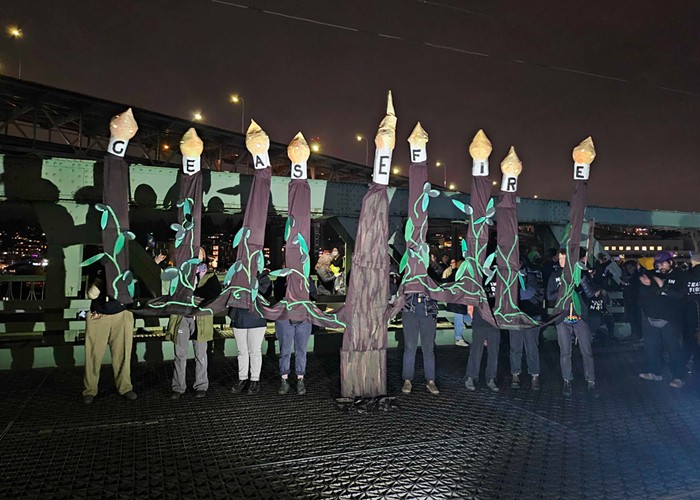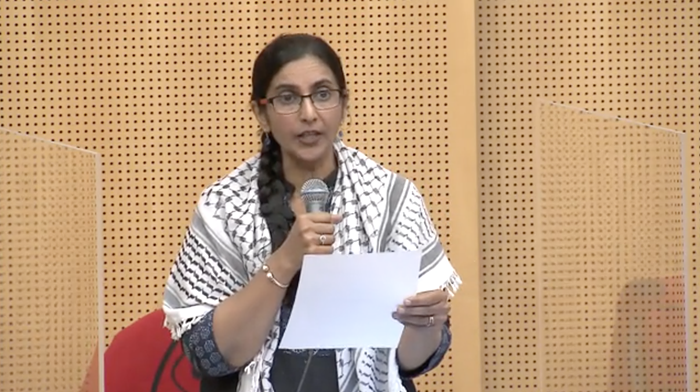
King County Prosecuting Attorney Dan Satterberg will not seek criminal charges against the two Seattle Police Officers who shot and killed Che Taylor in Lake City last February. Satterberg said in a press conference today that there was clear justification for the officers’ use of deadly force.
“This is not, as a legal question, a close case," Satterberg said. "The officers were confronted with an armed suspect that they believe was going for a gun when they were trying to arrest him for a felony. They were entitled to use defense."
The family of Taylor immediately condemned Satterberg’s decision and vowed to file a civil case over the matter.
Andre Taylor, the brother of Che Taylor, gave an impassioned speech on the first floor of the King County Courthouse immediately following Satterberg’s announcement. He said that because an inquest jury found that Taylor was following commands, SPD officers Michael Spaulding and Scott Miller should be held accountable for killing Che Taylor. (During the inquest, the jury was not asked specifically whether Che Taylor was "following commands." However, jurors were asked whether Che Taylor was showing his hands and moving downward just before he was shot. The inquest jury said, unanimously, that he was. During the inquest, Officers Spaulding and Taylor said that Che Taylor had started to follow commands to get down, but then stopped and reached for his gun.)
“The police officers said from the gate, had my brother complied he would not be dead,” Andre Taylor said. “But he did comply, so the question then remains: if the officers created a situation that caused them to be in fear by their commands, then they are responsible for their actions.”
Andre Taylor continued: “They are sending out a message to our community that even if you comply, you die. And there’s nothing nobody is going to do for you. I am insulted that he would say that it isn’t even close.”
Washington state has one of the strictest legal protections in the nation for police officers accused of unnecessary use of deadly force. Under current state law, a prosecutor must prove that an officer both didn’t act in good faith and acted with malice in killing a civilian. Satterberg said his decision would not be different if the good faith or malice requirements were removed from the state law, because the two officers were reasonably acting in self-defense.
Spaulding and Miller were staking out a known drug house when Miller saw Taylor exit his car with a holstered handgun on his hip, according to the two officers’ testimony in a fact-finding inquest convened last month. The two officers testified that they knew Taylor was a felon, which would make his possession of the handgun illegal.
Almost 45 minutes passed from when Miller first saw the handgun and when they approached and killed Taylor. Both officers testified that they did not see the handgun in the moments before they opened fire.
Evidence presented during the inquest hearing raised considerable questions as to the location of the handgun when the two officers opened fire on Taylor. A handgun was later found underneath the front seat of the car Taylor was standing adjacent to, and a crime scene investigator testified that there was evidence placing the handgun in that position before the two officers opened fire.
Satterberg said that because the two officers had reason to fear for their lives, the location of the gun did not matter.
“It may well have been that the gun was not in the holster but on the floor of the car," Satterberg said. "The actual location of the gun at the moment of the confrontation may ever be known. The officers’ belief that he had and was going to use it to resist arrest was not unreasonable."
The Taylor family has questioned whether the gun was planted by the police following the shooting, but Satterberg pointed to a holster found on Taylor’s hip as proof that there was little evidence that the gun was planted.
Spaulding, standing within an arm’s reach of Taylor, shot Taylor six times with his rifle. Miller, standing behind Taylor, fired his shotgun once in Taylor’s direction after Spaulding had already opened fire.
Satterberg said the number of shots fired by the two officers was not relevant to his decision.
Lisa Daugaard, director of the King County Public Defender Association and a commissioner on the Seattle Community Police Commission, said Spaulding and Miller, by approaching Taylor while he was next to a vehicle and not in an easy position to be arrested, created the fear that they later used to justify his killing. Daugaard said changes should be made in SPD policy to stop officers from creating dangerous circumstances.
“We need to see leadership to ensure that next time… this will violate policy, there will be a way to hold those who set in motion events that resulted in the inevitable death of another person unnecessarily—hold those accountable,” Daugaard said.
Brenda Taylor, the wife of Che Taylor, said she was heartbroken at the loss of her husband and vowed to continue to push for changes in police accountability.
“I am very irate that these officers will not be charged for assassinating my husband,” Taylor said. “I am not going to have my husband die in vain—it’s going to change.”



















